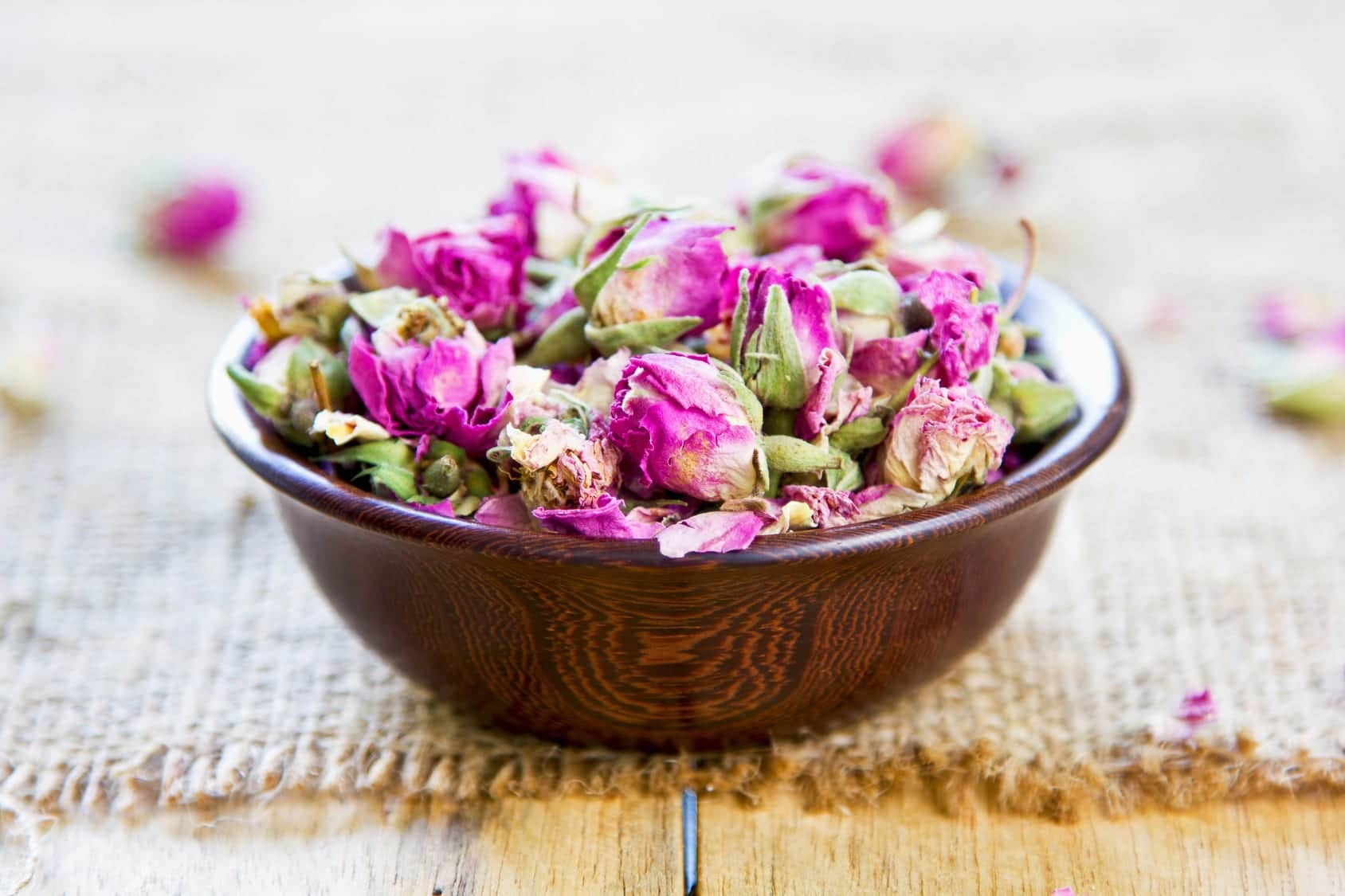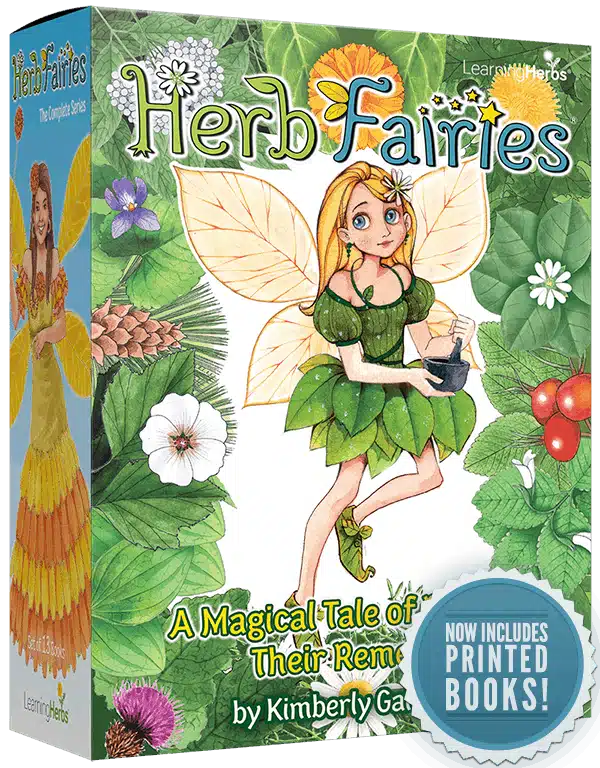I cFlowers always make people better, happier and more helpful;
they are sunshine, food, and medicine to the soul.
– Luther Burbank
It is always pleasing and uplifting to work with flower medicine. Their healing magic is evident in the way they lighten our energy just by looking at them. Flowers are not typical when we think of immune support, but there are some with powerful medicine to help the immune system. Some can be used as a healthy and tasty means of supporting the immune system through everyday eating. Other preparations such as tinctures can be used with more intention to give a boost to the immune system when traveling, working in a school, or to fight off illness.
Infused honey, floral-infused beverages, and tinctures are a few easy ways to include flowers for immune support. These flowers can also be used to help many other conditions in addition to supporting the immune system.
Flower-Infused Honey
Infused honey is a delicious way to boost immunity! Honey in itself is antibacterial and antiviral, making it a wonderful vehicle. To make flower-infused honey, I pick flowers early in the morning when they are freshest. I give them a gentle shake to remove any insects. To prevent moisture from getting into the honey, I do not wash the flowers.
How to Make Flower-Infused Honey
- Fill a sterilized jar with loosely packed fresh flowers.
- Drizzle honey (I prefer organic, raw honey) into the jar. Stir the honey to release air bubbles and so it settles into all the crevices between the flowers. All the flowers should be completely covered with honey. Cover the jar with a lid.
- Leave the jar in a cool, dark place to macerate. Every day, flip the jar over because the flower material rises to the top.
- After a few days, the honey can be used. I like to infuse it for 3 weeks before I use it.
- Strain if desired. I do not strain the honey, as the flowers add texture.
Enjoy infused honey on scones, toast, in vinaigrettes, or a cup of tea. At the onset of colds and flus, they can also be taken directly by the spoonful.
The following flowers make lovely honey and help to support the immune system:
Bee Balm (Monarda spp.): Native to North America, bee balm is a member of the mint (Lamiaceae) family. Herbalists use several types as medicine. Scarlet bee balm (Monarda didyma) is used to make Oswego tea. Lemon bee balm (Monarda citriodora) has a distinct lemony flavor. You can use both to make a bee balm-infused honey. However, my bee balm of choice is wild bee balm (Monarda fistulosa), also called wild bergamot or mountain oregano. Bee balm is rich in the compound thymol, which is an antimicrobial, antifungal, antibacterial, and antiviral.
Rose (Rosa spp.): While this recipe works with any scented rose, damask (Rosa × damascena) and rugosa roses (Rosa rugosa) make it even more special. (It’s important to remember not to use sprayed or chemically treated roses.) Where I live in Arizona, the summer has endless days above 100 degrees. This type of heat often leaves me feeling depleted and wears on my immune system as a result. Rose cools and soothes1; a spoonful of rose honey restores my energy and lifts my immune system.
Rose is also antibacterial, antiviral, and contains antioxidants. It is helpful in soothing coughs due to its relaxing properties. When I really need some winter comfort and the benefit of boosting immunity, I use rose honey to flavor and sweeten hot chocolate.
Japanese Honeysuckle (Lonicera japonica): Japanese honeysuckle is an immunostimulant.2 It typically is not taken long term but rather when the immune system needs a boost. I collect closed buds and open flowers. Japanese honeysuckle has the following actions to support the immune system: antiviral, antibacterial, antifungal, decongestant, and antispasmodic. Its antispasmodic action is useful to soothe dry coughs. Add the infused honey to tea at the first sign of sniffling or discomfort in the body that indicates a cold or flu is taking hold. Honeysuckle should be avoided during pregnancy.
Floral Beverages
Flowers are often used in teas, flavored waters, cordials, and infusions, and to enhance the benefits of these beverages. A hot cup of tea does wonders to soothe the discomfort of being ill. Similarly, cold beverages are also soothing and refreshing on a hot summer day.
These are some of my favorite floral drinks for immune support:
Elderflower (Sambucus spp.): Elder is one of the most well known flowers for immune support. Herbalists commonly use elderberry syrup as a winter tonic to strengthen the immune system. However, you can also use elderflowers. Elderflowers are rich in bioflavonoids, antioxidants that support its antibacterial and antiviral actions. You can prepare elderflower as a hot tea, elderflower mead, champagne, and cordial.
You can make elderflower tea with fresh or dried flowers. For a dried flower tea, place 2 teaspoons of the flowers in a cup and cover with boiling water. Steep, covered, for 10 minutes, then strain. For a fresh flower tea, use twice as many flowers (remove stems).
Echinacea (Echinacea spp.): Echinacea makes a lovely tea and is very effective in fighting infections, especially those that affect the respiratory system. As an immunostimulant, it helps to stimulate white blood cells and you can use it at the onset of colds and flu. Continued use during illness lessens the duration of the illness. Rosemary Gladstar states that it is both preventative and curative when used this way.3
Herbalists use the closed buds and open flowers as well as stems and roots to make tea. To make the tea, place 1 tablespoon of dried plant matter or 2 tablespoons of fresh plant matter in a cup and pour in 10 ounces of boiling water. Steep for 10 minutes. I use echinacea tea as an added immune support to using a tincture of the plant. Use sustainably or homegrown echinacea, as it is on the United Plant Savers At-Risk plants list. Avoid wildcrafted or foraged echinacea.
Roselle (Hibiscus sabdariffa): You can harvest roselle calyxes after the flower has bloomed and a seed pod has formed. To use them fresh, pick the pod when fully developed but still flexible. The deep ruby color is a clue to the rich antioxidant content — vitamin C. This makes roselle a perfect immune booster while it also helps hydration. To make hot tea, pour 8 ounces of boiling water over 1/4 cup of dried or fresh chopped calyxes and steep for 20 minutes.
For summers, agua de jamaica is the drink of choice. To start, make a concentrate. Steep 2 cups of dried or fresh flowers (deseeded) in 5 cups of just-boiled water for 20 minutes, then strain. You can store this concentrate in the fridge for a few days. To mix a glass of agua de jamaica, combine equal parts of water and concentrate. To mix all of the concentrate into a drink, add 5 more cups of chilled water. Sweeten as desired (I like using simple syrup). Enjoy as a drink, make ice cubes for lemonade, or even popsicles.
Flower Tinctures
The flowers I use for tincture medicine are what I consider my heavy lifters. Tinctures allow you to take a more concentrated amount of herb. You can also take them more frequently if required.
I use fresh plant material to make tinctures. My tinctures are simple; I fill a jar with the flowers and add enough 100-proof vodka to cover the plant material. I check the jar the next day, topping it off with more alcohol as the plant matter settles. You can keep the tincture in a cool, dark place for 6 weeks, and then strain, bottle, and label it.
You can use dried flowers in much the same way. However, use slightly less dried material. Dried flowers will absorb more liquid and therefore you’ll need more space in the jar to top off and cover the plant material.
When I want to work with flowers for immune support, here are my go-to tinctures:
Spilanthes (Acmella oleracea): I started working with spilanthes last year, and I will always have this tincture on hand. It has unusual cone-shaped flowers with a zingy taste that numbs the mouth when chewed on. This is strong immunostimulant medicine, stimulating the white blood cells to bring the body back into balance. I use this in combination with yarrow if I am definitely “coming down with something.”
It is also good to take a week prior to flying and a few more days after to fight any possible viruses or bacteria. If I am using it an immunostimulant before a trip, I will use a smaller dose of one dropperful, two times a day. When taking it to fight off an infection, I will use two droppersful, four times a day, but will also use yarrow tincture.
Yarrow (Achillea millefolium): Three years ago, I made my first tincture using the flowers of yarrow. It was also the first time I had grown it or actually seen it. Yarrow’s distinctive scent implies “clean and fortifying” to me. This also applies to its use for immune support. It is an excellent diaphoretic, causing the body to sweat and drawing out the toxins. In this way, yarrow speeds up recovery, but it also stimulates white blood cell production. When I use yarrow with spilanthes, I use it at the first signs of a cold or flu and take one to two droppersful about four times a day.
Calendula (Calendula officinalis): I consider calendula an immune-modulating herb. It has a milder effect on the immune system than yarrow and spilanthes, but it has strong actions on the lymphatic system. By improving lymphatic function, it supports the immune system in a gentle way. It is a draining herb, particularly helpful with sore swollen glands. Calendula is also antimicrobial, antibacterial, and antifungal.
If growing calendula for plant medicine, resina calendula has the highest resin content and will make the strongest medicine. The closed buds of calendula actually contain more resin than the open flowers; I use a combination of both in my herbal preparations.
















I love this! More to add to the list for planting. Very well written and so informative, Ayshica. Thank you!